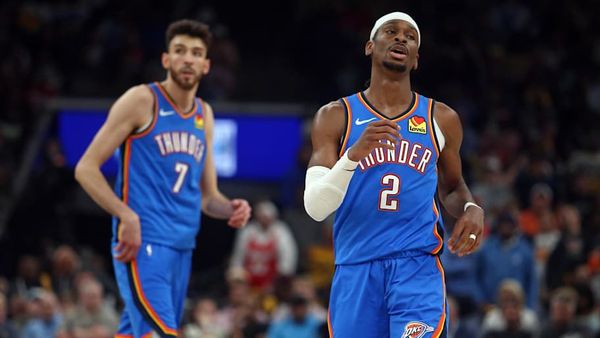
YouTube is opening the doors for more creators to participate in its revenue sharing programs, seeking to fend off competition from rival video platforms with a pair of announcements designed to strengthen its ties with internet influencers.
The video platform’s shopping affiliate network will no longer be invite-only, YouTube said on Tuesday, providing a new way for U.S.-based creators with more than 20,000 subscribers to earn money. The video site also said that smaller-scale creators, who previously did not meet requirements for the YouTube Partner Program, can now profit directly from their fandoms on the platform as a new tier of YouTube partners.
The announcements represent YouTube’s latest effort to keep creators happy by putting money in their pockets, sharing proceeds of its vast advertising machine to distinguish itself from competing platforms.
“We want a system where when we do well, the creators do well,” Amjad Hanif, YouTube’s vice president of product management in creator products and monetization, told Fortune. “What we're trying to do is optimize between giving the viewers the content they want and giving creators the right incentives to create that content and invest in future content.”
YouTube is the platform where some of the highest-paid creators have minted millions. This wealth stems from the YouTube Partner Program’s ad revenue sharing program Adsense, by which creators who meet a certain threshold can opt in to splitting ad revenue—45% of advertiser revenue on Shorts and 55% on classic longer-form content—on the platform. In total, this program has paid out over $50 billion to creators, artists, and media companies, and played a significant role in top YouTuber salaries, like MrBeast’s cool $54 million in 2021.
When it comes to paying creators, YouTube’s competitors host an array of programs that seem to be in constant flux. TikTok, which has failed to meaningfully compensate creators through the Creator Fund, is now allowing eligible creators to place premium content behind a paywall. Meta is testing payments to creators based on their Reels’ performance after variable payouts to creators on confusing criteria. Snap has been paying top creators enormous sums—based on ad revenue sharing—for their Stories, and recently lowered the eligibility barrier.
YouTube Shopping’s affiliate program allows creators to tag products in their videos from brands like Sephora, Nordstrom, and Wayfair, and earn a commission (split with YouTube) if a viewer purchases from the video. This program was previously limited to hand-picked YouTube partners. As of today, any YouTube partner with over 20,000 subscribers will be eligible to earn affiliate commissions from 50 brands across beauty, apparel, footwear, home, and tech. Though a spokesperson for YouTube declined to share commission percentages or payouts for the program, she said they are “competitive” with other affiliate programs.
This marks YouTube’s large-scale foray into the increasingly crowded affiliate shopping arena. The space has historically been led by the smaller-scale $2 billion (valuation) Softbank-backed LTK. The husband-wife-cofounded platform is responsible for driving $3.6 billion in sales for over 6,000 brands (YouTube’s 50 brands available for affiliate partnerships pale in comparison). Instagram killed its affiliate program in August 2022, and has not released a replacement. And TikTok has been testing its version since November, where commission rates are set by the individual brands that range from fashion giant Revolve to drain protector TubShroom, according to Insider.
LTK cofounder Amber Venz-Box told Fortune that video is three times more effective content at stimulating sales than static photos on LTK. So, with video giant YouTube luring brands and creators to its affiliate program, will it kill off niche affiliate platforms like LTK?
“YouTube is obviously a big platform where all these third parties are leveraging affiliate links, but the realities is many of the niche players have very deep relationships and pay slightly more,” says Reza Izad, cofounder and partner at Underscore Talent, which represents over 200 creator-clients. “If those platforms can survive the Amazon affiliate program, they’ll survive this one. Fundamentally, there's a lot of room in this space.”
Brands and marketplaces, too, own and operate their affiliate programs with influencers. It’s no surprise Amazon is the market leader in this realm. These influencers—called Amazon "associates"—curate products on the e-commerce giant, link their respective pages in social profiles, and make commissions.
While Hanif avoided comments on YouTube’s competition, he did stress the importance of revenue diversification for creators, emphasizing the affiliate network and fan funding expansions as ways for creators to accomplish this.
The latter, and the second part of today’s announcement from YouTube, allows creators who have at least 500 subscribers, three public videos, and either 3,000 watch hours or 3 million Shorts views in the last 90 days to monetize their fandoms with channel memberships, and cash tip-like features Super Chat and Super Thanks (among others). Though these creators remain ineligible to earn ad revenue shares via AdSense, they are technically now part of the notoriously lucrative YouTube Partner Program.
In theory, this would garner YouTube loyalty among emerging creators who might be sowing their content across Reels and TikTok. “One of the number one pieces of feedback I've gotten from creators that are much earlier in their career is that it takes too long to begin earning from the partner program,” says Hanif. “We started work to figure out how to give creators a chance to begin much earlier in their career, and that's what this new fan funding extension of YPP was born from.”
These direct-from-fan monetization features are not unique to YouTube. TikTok and Instagram allow fans to pay creators on live streams. And Snap allows users to send “gifts” to creators that equate to cash tips. On more specialized social platforms Patreon, Twitch, and OnlyFans, creators rely on fan funding to earn.
While being able to make money from fan engagement on YouTube may be meaningful for some creators, it probably will not constitute a living for most. Izad agrees that this YouTube monetization format will not be very significant for most small-scale creators, but does point out that those with “very strong niches,” like tutors, might be able to meaningfully profit from features like subscriptions and message-for-purchase Super Chat.
Hanif knows this too. “You don't want to be reliant on just one kind of product—whether it's ads revenue, or if it's affiliate revenue,” he says.







